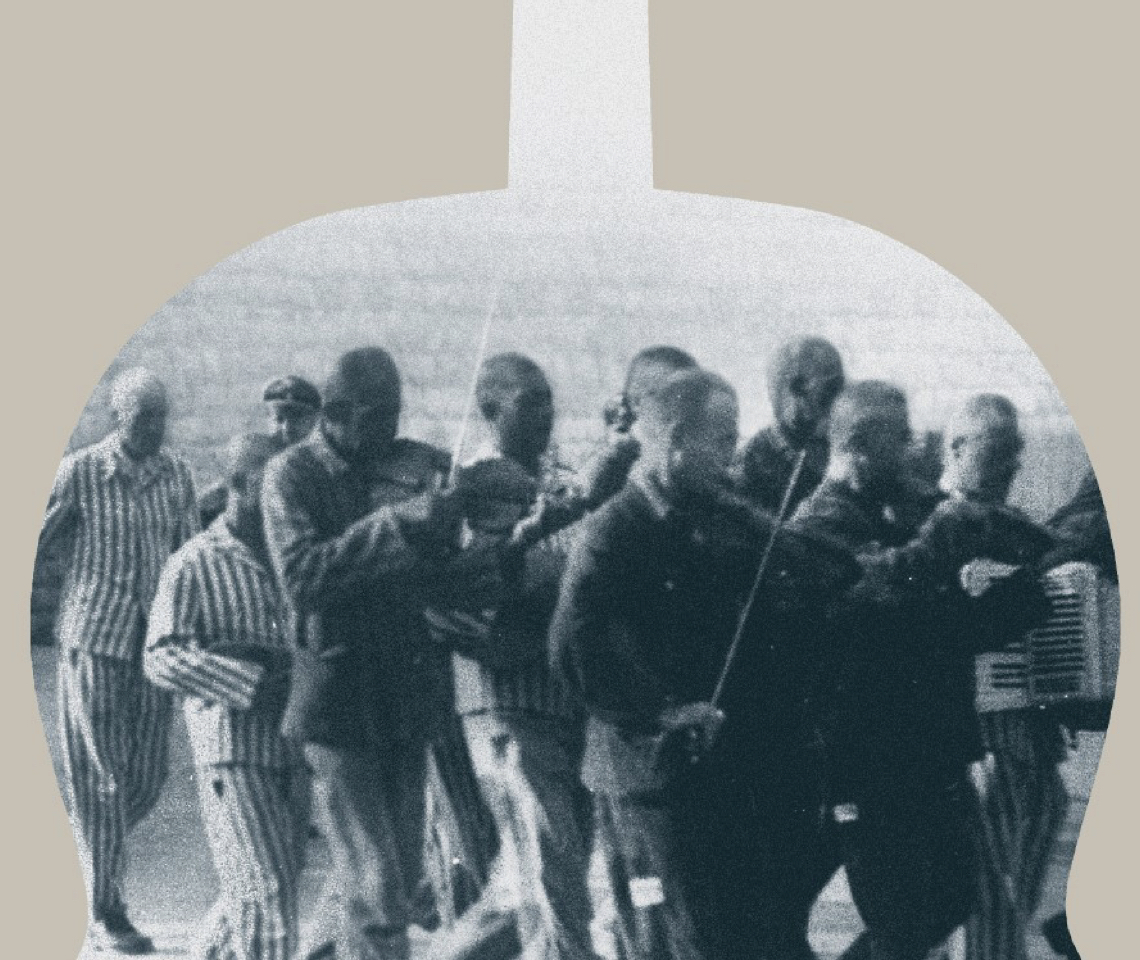
CAMP ORCHESTRAS
As soon as the concentration camps opened in 1933, «camp orchestras», or Lagerkapellen, consisting solely of prisoners, were created.
Initially, these small non-professional groups of musicians often have only three or four instruments, then they grow from 1938 to become real symphony orchestras.
SS commanders transpose to the concentration camp regime their military and musical functioning where the orchestra must promote group cohesion and give cadence.
The orchestra beats each day at the camp: the departure and return from work, the call of the prisoners but also the executions of prisoners. The sound of instruments and songs are part of everyday life.
OUTDOOR AREAS
In Nazi camps, music has different functions if played in outdoor spaces or inside barracks.
The music performed outside is mainly performed under duress, on the orders of the SS or guards and under their supervision: it serves first of all to ensure the synchronization of the steps of the mass of inmates.
On the doorstep, the camp’s call-in square and the main “streets”, it contributes above all to the proper functioning of the Nazi machine.
DISCOVER THE SECOND PART OF THE EXHIBITION
INDOOR SPACES
In indoor spaces, music is most often played spontaneously and used as a tool of artistic and spiritual resistance.
Alongside the official orchestras, many small instrumental ensembles were born for these activities, as well as choirs.
Their repertoires are more committed: political, patriotic or religious songs, or even diverted songs, whose words denounce the conditions of survival or the brutality of certain kapos.
Discover the third part of the exhibition
MUSIC IN KILLING CENTERS
In the killing centers that the Nazis call «extermination camps», the surprisingly varied repertoires range from military marches to Yiddish songs and even religious songs.
IN THE ANTECHAMBER OF DEATH
Under the Nazi regime, music resonated not only in concentration camps and death centers, but also in German prisons, prisoner of war camps, ghettos and some transit camps.
This is also the case with the internment camps of the Vichy regime.
Among these places, the choice was made for camps linked to the killing centers by their function of “antechamber” of the camps of Eastern Europe, to which a large part of the detainees will be deported and will perish in the gas chambers: French internment camps, which became transit camps in 1942, as well as Westerbork (Netherlands) and Theresienstadt (Czech Republic), which occupy an important place in the organization of deportations.




